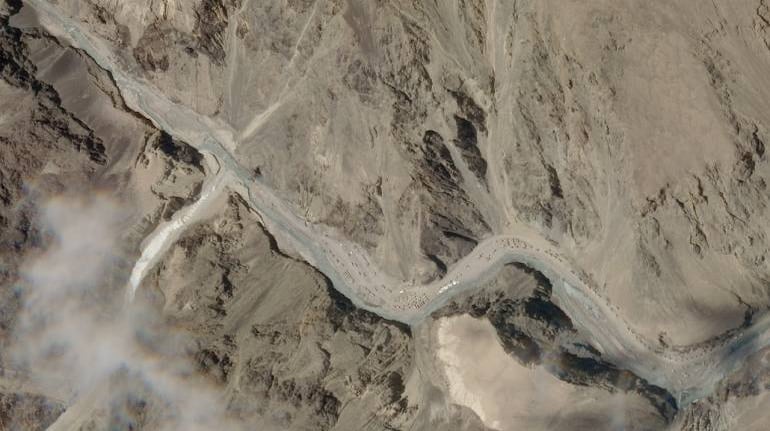



The Indian media has been belligerent in its commentary on the alleged intrusion of Chinese troops across the Line of Actual Control (LAC) between India and China. However, mainstream Chinese media did not seem to be too bothered.
A tweet by veteran China journalist and former The Hindu correspondent in Beijing, Ananth Krishnan summarized the coverage, or lack of it. He pointed out that “China's official media broadly buries news of the worst clash on the India China border in 50+ years. Not mentioned in People's Daily and PLA Daily, the official papers of the Party and PLA. Global Times Chinese carries on page 16”.
It was not just the print media that chose to ignore the bloody clashes in the country’s south. China’s public broadcaster, CGTN, whose anchors go into maniacal rage when issues of territorial sovereignty are raised were unusually silent.
Take a look at what happened a few days before the India-China combat at the border. Reports of a US Naval carrier group on a routine patrol in the Indo-Pacific seas surfaced. The Chinese communist party-owned Global Times took affront and declared that “the US move exposed its hegemonic politics in the region, and China could counter it by holding military drills and showing its ability and determination to safeguard its territorial integrity”.
Not a recent trend
Why then did Chinese troops killing Indian soldiers receive hardly any ink Beijing’s media? One plausible reason is that India figures low on China’s list of priorities. India does receive coverage for all the wrong reasons — Delhi as the “rape-capital” and “most polluted” (much to Beijing’s relief). India also gets attention for its “messy politics” that China’s media cannot wrap its head around.
Much of Chinese media outlets are State or Communist party-owned and toe a strict state line, especially on foreign relations.
Prime Minister Narendra Modi’s electoral victory in 2014 was a big India moment in the Chinese media. For the first time an Indian leader featured on Chinese language magazine covers, hanging on newsstands outside subway stations.
Chinese intelligentsia and media commentators believed Modi’s win was about to trigger a breakthrough moment in relations between the two countries. Now that the euphoria has died, it seems back to business. America, Japan and other regional countries occupy the top slot on foreign headlines.
China, meanwhile, became India’s largest trading partner but with a huge trade deficit in Beijing’s favour. This is why a call to boycott Chinese goods in India will have little to no impact on the Chinese economy. Global Times, however, couldn’t resist taking a dig with an article headline ‘Indians can hardly resist buying Chinese quality goods: analysts’.
In essence, India is hardly of significance to China and does not pop up much in the Chinese public sphere.
India-China same same
Indian media houses also do not seem to want more than the cursory coverage of China on a daily basis. Even today, only two of India’s print publications have a reporter in Beijing. PTI, India’s largest wire agency, is also represented. None of India’s vernacular papers has a reporter on the mainland, while even back in 2015, China had more than half a dozen reporters in India, writing in both Mandarin and English.
Indian foreign policy is still largely unaccustomed to the idea that China has emerged as the second largest economy in the world and focuses a lot of energy into thinking of China as an adversary in the race to become Asia’s dominant power. India has more or less conceded the trade war to Beijing; New Delhi must come to terms that its foreign policy must modulate priorities along those lines.
A paper by Brookings India published in March said: “India has also emerged among the key overseas markets for several Chinese companies with hundreds of millions of dollars in revenues at stake. Whether this can be better leveraged by India’s trade strategy, which has so far failed to balance the trading relationship or secure market access for Indian firms in China, needs to be explored.”
Given the present situation at the border, any such exploration will possibly be delayed further.
For a foreign policy still seemingly stuck in its Nehruvian moorings, a new Look-East policy would probably put India more firmly on Beijing’s radar. For now, the present crisis may just have put India on a stronger look-West trajectory.
Danny Geevarghese is a writer who lives in Beijing. Views expressed here are personal.
Discover the latest Business News, Sensex, and Nifty updates. Obtain Personal Finance insights, tax queries, and expert opinions on Moneycontrol or download the Moneycontrol App to stay updated!
Find the best of Al News in one place, specially curated for you every weekend.
Stay on top of the latest tech trends and biggest startup news.